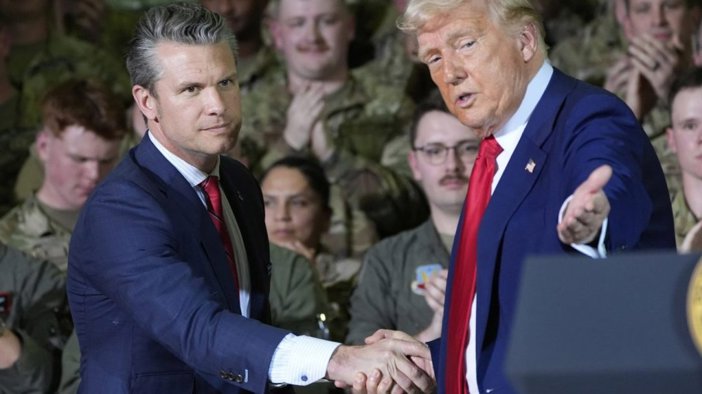
Trump Moves Pentagon R&D Funds to Pay Troops
President Trump has instructed the Defense Department to reallocate research and development funds to guarantee U.S. troops receive their October 15 paychecks despite the shutdown.
Amid a prolonged federal government shutdown, President Donald Trump has announced that he will reallocate funds originally intended for research and development to ensure U.S. military personnel receive their October 15 paycheck. The move, though controversial, is intended to shield the armed forces from financial disruption while budget negotiations stall.
Shutdown Stalemate and Its Ripple Effects
On October 1, 2025, the U.S. federal government entered a partial shutdown after Congress failed to pass a new spending package. Republicans control both chambers of Congress, but lack the 60 votes required in the Senate to overcome Democratic opposition to the spending bill. Democrats have insisted that healthcare subsidies under the Affordable Care Act be included in any stopgap funding measure — a condition Republicans have rejected.
As agencies curtailed operations, many federal workers were furloughed without pay, and nonessential services were suspended. At the heart of the impasse is a clash over policy priorities: Democrats press for social spending, while Republicans demand cuts in traditionally Democratic programs.
Executive Action: Redirecting R&D Funds
On the eleventh day of the shutdown, President Trump used his social media platform, Truth Social, to declare that he would use his authority as Commander in Chief to instruct the Department of Defense to “use all available funds” to assure troop pay on October 15.
The administration later confirmed that nearly $8 billion in previously unobligated research, development, testing, and evaluation (RDT&E) funds would be tapped to fulfill military payroll obligations if the funding lapse persists. A Pentagon official stated that these RDT&E resources were identified and set aside specifically for potential reallocation.
This decision effectively shields active-duty service members from immediate pay disruption, distinguishing them from furloughed government employees, who have not been granted the same relief.
Legal, Political, and Institutional Considerations
Is This Move Legal?
The redirection of appropriations raises constitutional and statutory questions. The Antideficiency Act prohibits federal agencies from spending money not expressly authorized by Congress. Past shutdowns have met scrutiny under this law, with certain executive actions ruled impermissible by federal watchdogs.
In 2019, a previous Trump administration was scrutinized by the Government Accountability Office for reassigning funds inappropriately during a 35-day shutdown. Critics warn that similar legal risks may accompany the current effort to funnel R&D dollars into troop pay.
Political Responses and Fallout
Democrats have denounced the move as a political ploy, accusing Republicans of using the military as leverage in budget talks. Congressional Democrats argue the administration is circumventing legislative authority by reallocating funds unilaterally.
Republican leaders, on the other hand, welcomed the announcement as a necessary step to prevent military hardship and maintain morale. House Speaker Mike Johnson has resisted calls for a standalone troop-pay bill, maintaining that funding should be tied to broader legislative measures.
Several lawmakers worry that this executive maneuver may further implicit tension between the legislative and executive branches, especially in future appropriations conflicts. Whether the courts will weigh in remains to be seen.
Impacts on Troops, Families, and Federal Workers
For U.S. service members—of whom there are approximately 1.3 million active-duty personnel—the assurance of pay represents a crucial stabilizer during the political impasse. Many military families operate on tight budgets, and missed paychecks would have severe consequences.
By contrast, over 750,000 federal employees furloughed by the shutdown do not benefit from the same immediate relief, leaving them without compensation and amid financial uncertainty. Some agencies have already initiated permanent cuts to civil service positions, compounding the human and institutional effects of the funding lapse.
This bifurcation in treatment underscores political calculus: protecting the symbolic institution of the military, while civilian agencies bear the burden of budget impasse.
Key Questions Raised
Can lawmakers overturn or challenge the reallocation?
Yes. Congressional committees or courts could scrutinize the legality of diverting R&D funds. Challenges under the Antideficiency Act or through budget oversight mechanisms may emerge. Legislative pushback or judicial review might constrain similar future actions.
Will this measure prevent service members from being used as political leverage?
In the short term, yes—troops are shielded from the immediate consequences of a stalled budget. However, partisan dynamics remain entrenched, and the novelty of this move may establish precedent for future shutdowns, potentially eroding congressional authority further.
How long can this workaround last?
If the shutdown extends beyond the mid-October pay period, additional funding may be required. It is unclear whether Congress or the administration has a longer-term funding plan; absent resolution, the sustainability of repurposed funds is uncertain.
Looking Ahead
As shutdown negotiations continue, lawmakers face mounting pressure to resolve the impasse. The administration’s funding shift may relieve immediate stress on military families, but it also places a spotlight on legislative inaction and executive flexibility.
Observers will watch closely whether Congress introduces a pay-only funding bill, whether courts intervene, or whether lawmakers return to the bargaining table under increased pressure. Meanwhile, federal civil servants and marginalized agency missions remain vulnerable amid the continuing budget standoff.
This episode may become a benchmark for how future shutdowns are handled—especially with respect to military funding and the balance of power between the branches of government.
Sources: Reuters Associated Press Washington Post Politico






